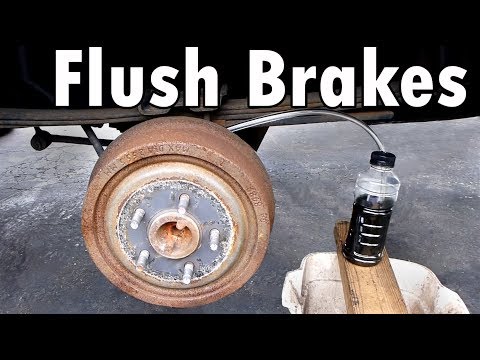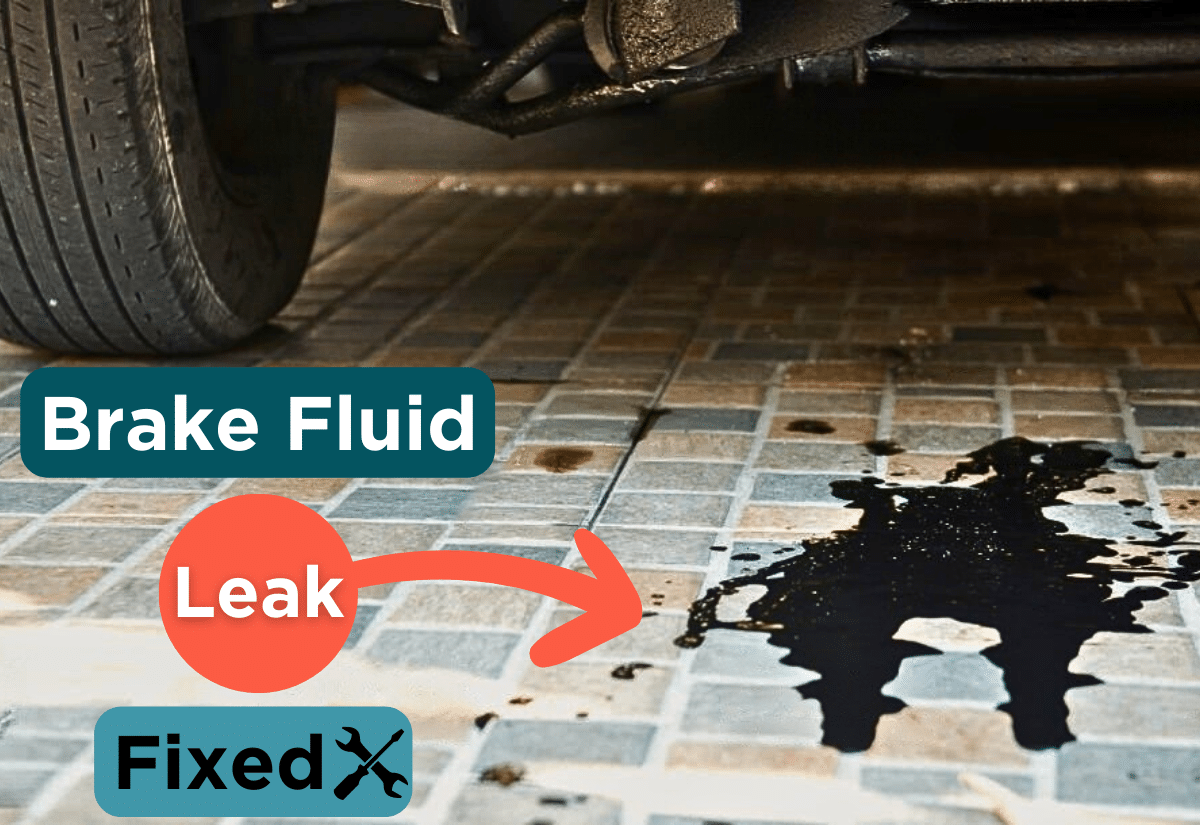
Fluid leaks are relatively common in cars; therefore, at some point, you may encounter brake fluid puddles or stains on and under your vehicle. Identifying a brake fluid leak is hard by just looking at the oil’s appearance, so you’ll have to look for some telltale symptoms.
Besides oily stains on your tires and puddles underneath your car, you might experience other indications of a brake fluid leak, such as a soft brake pedal, a red warning light on the instrument panel, poor braking ability, and the most obvious sign, a decreasing level of brake fluid in the reservoir.
Your braking ability will decrease, and your stopping distance will increase as fluid leaves the hydraulic system. In other words, your brakes will not work correctly, making driving unsafe, so you should get a brake fluid leak fixed as soon as possible.
As for the causes, the most common ones are worn-out brake calipers and ruptured brake lines to improperly secured connections. The repair complexity will depend on the underlying cause. In the best case, you may just need to replace a brake line, while more severe issues, like a malfunctioning master cylinder, may require more extensive repairs. Whichever the cause, it’s crucial to address the leak promptly to ensure you’ll be driving safely.
In this article, we’ll take a look at the most common signs and causes of a brake fluid leak, as well as what to do if you notice brake fluid leaking from various components in your vehicle.
Beware Of These Telltale Signs of Brake Fluid Leakage
Among the signs of a brake fluid leak, some will be more definitive than others and point more clearly to a fluid leak problem, such as the fluid level decreasing in the reservoir. The more of these symptoms you spot, the more likely you have leaking brake fluid and not another issue with the brakes.
1. Measuring a Low Level of Brake Fluid (Even After Topping Up)
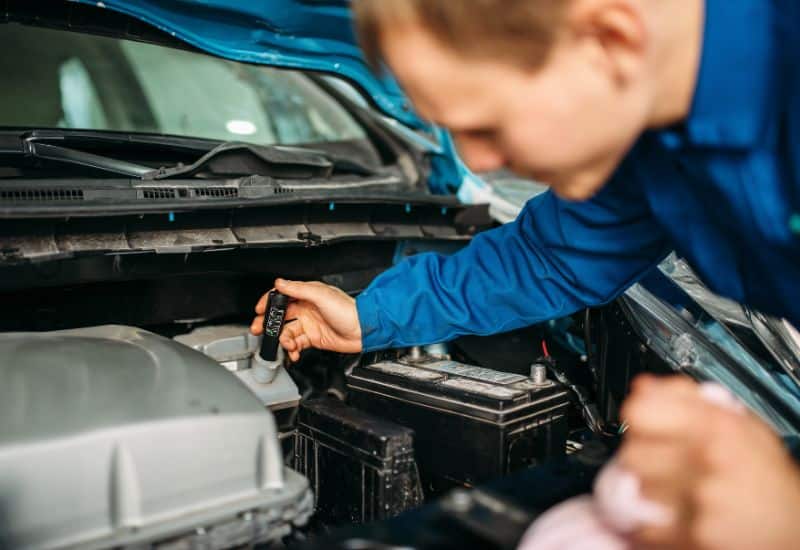
If your brake fluid level decreases quickly, it means there could be a leak somewhere in the system. To check your brake fluid level, look for the semi-transparent container with a yellow brake symbol and fluid indication on the cap. You can usually find it at the back of the engine compartment, on top of the master cylinder. On the side of the container, you’ll see the minimum and maximum recommended fluid levels.
If you recently topped up your fluid and the level is still below the minimum, there may be a leak on one or more of the components.
2. A Brake Fluid Warning Indicator
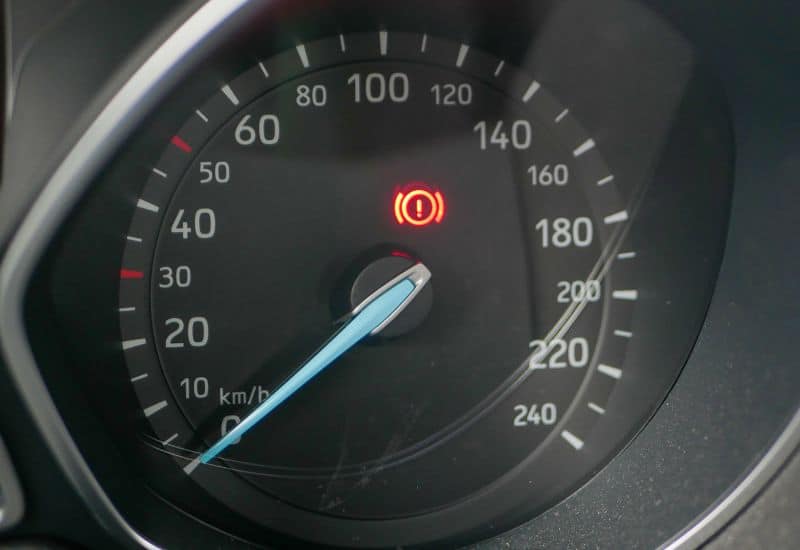
A circle with an exclamation mark in the center, usually red, on your instrument cluster, means that your car is signaling something’s wrong with the brakes.
If you have eliminated other common causes, such as worn brake pads or simply that you disengaged the parking brake, and you still see this warning light, that’s a reason to suspect a brake fluid leak.
3. Your Brake Pedal Feels Soft
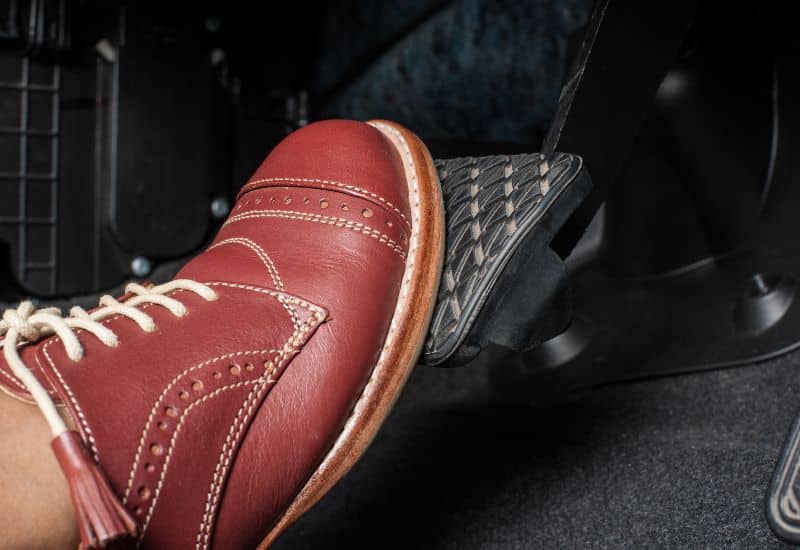
A soft or squishy brake pedal usually feels like that because, with less fluid in the system, there’s less pressure as the air starts taking up the space.
If you try to pump your brake pedal but don’t feel the pressure building up, it’s possible you have a brake fluid leak. When everything is working correctly, the fluid amount makes the pedal just the right amount stiff. A lack of it leads to the brake pedal feeling soft.
4. The Car Is Not Braking Sufficiently

Is your car hardly slowing down, even when you press down hard on the brake pedal? This may again be due to a lack of hydraulic fluid necessary to engage the brakes fully.
This is a very dangerous symptom, and if you notice that you can’t brake sufficiently during a drive, slow down by downshifting and find a safe place to stop. Continuing to drive with brakes that don’t function is extremely dangerous and never recommended!
5. Stains on Your Car’s Tires or Under the Car
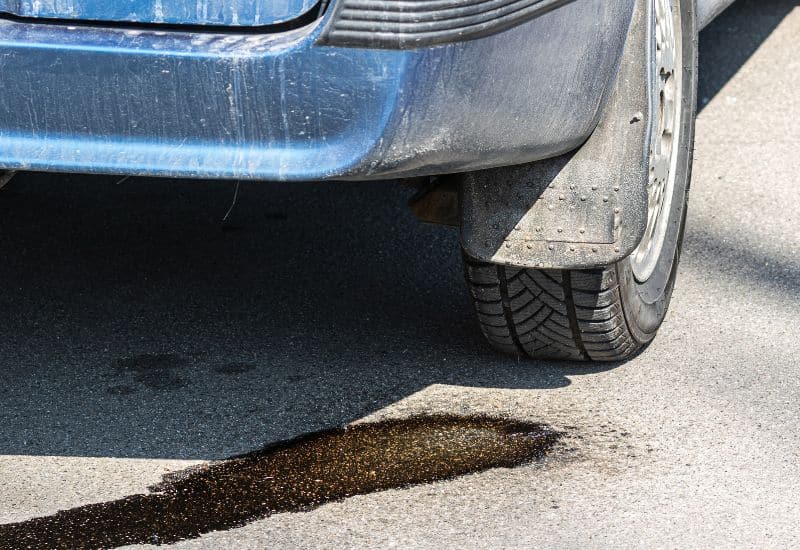
Oily stains below your car can mean a multitude of things, but stains on the tires usually point to a leak on one of the brake caliper cylinders. Brake fluid is typically nearly transparent when fresh but may become discolored from use and look yellow to brown, depending on age.
The location of the leak can be a good pointer as to which component is leaking: for example, if there are stains on your front right tire, it’s likely that the front right brake caliper is leaking.
Solving the Mystery: What Causes Brake Fluid Leaks?
Various components can leak in the braking system, but some are more commonly at fault.
1. Worn-Out Brake Calipers
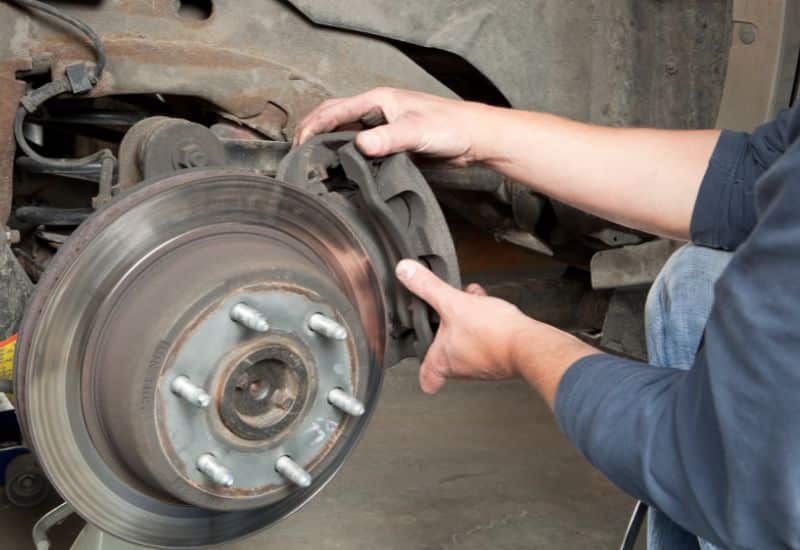
Due to debris, dirt, and wear and tear, the seals on the slave cylinders of the brake calipers can develop cracks through which brake fluid starts to leak.
Another potential hazard is worn brake pads. If they become too thin, the caliper piston has to travel further, which may lead to your brake fluid levels dropping.
2. A Ruptured Rubber Hose
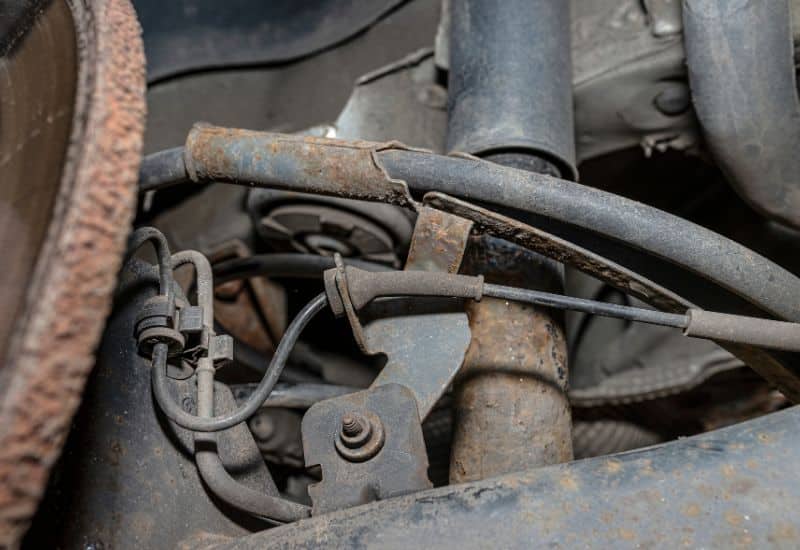
The rubber hoses that connect to the braking equipment on each one of the wheels can be ruptured by foreign objects or simply by wear and tear, as rubber is a material that can easily degrade. If this happens, you may see fluid stains on or behind your wheels.
While most of the car’s brake lines are made of aluminum and are non-flexible, the exceptions are the lines that lead directly to each one of the wheels. These lines usually consist of rubber because of the movement and other stresses they may experience near the wheels.
3. Joints Between Rubber and Aluminum Lines
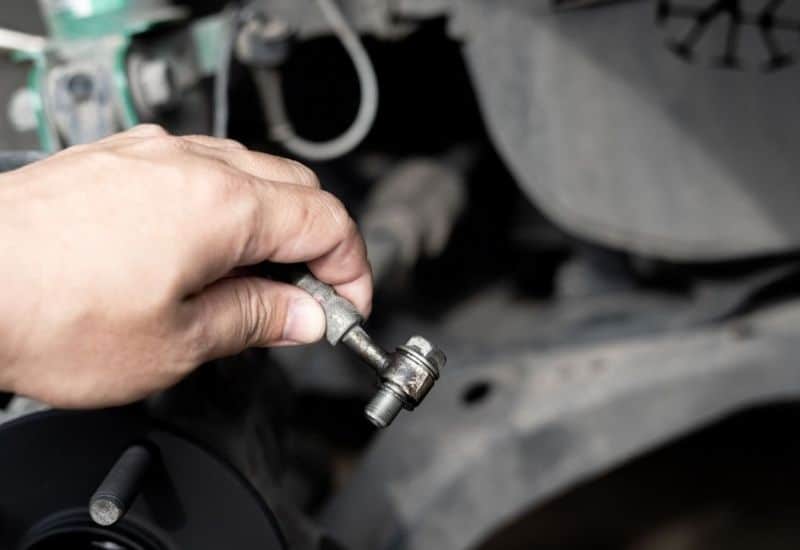
Another common spot for a leak is on or around the joints between the rubber hoses and the aluminum brake lines. The joints are just one part of the hydraulic system that’s in a location where it’s likely to weaken and leak.
This issue may mean you’ll have to tighten the joint or replace any of its components, such as the fittings.
4. Old Age or Dirt That Wears Out Rubber
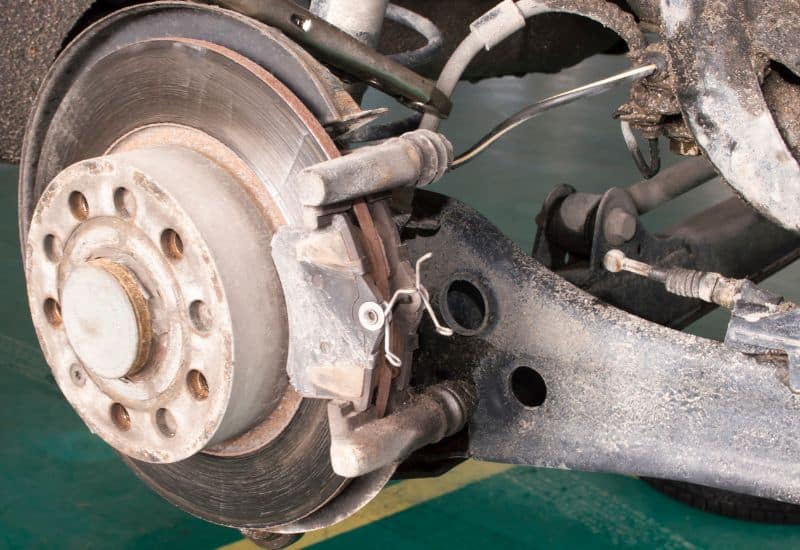
Hoses, gaskets, or seals that make up the braking hydraulics become less flexible and more prone to cracks over time. This is simply because rubber is a material prone to aging. When seals develop cracks, they can start letting oil through instead of fitting tight. Dirt and other damaging substances can also have a similar effect.
While rubber can age more quickly in conditions of extreme weather, it’s still unlikely you’ll find any issues on a car that’s, for example, two years old.
5. Poorly Tightened Seals Between Components
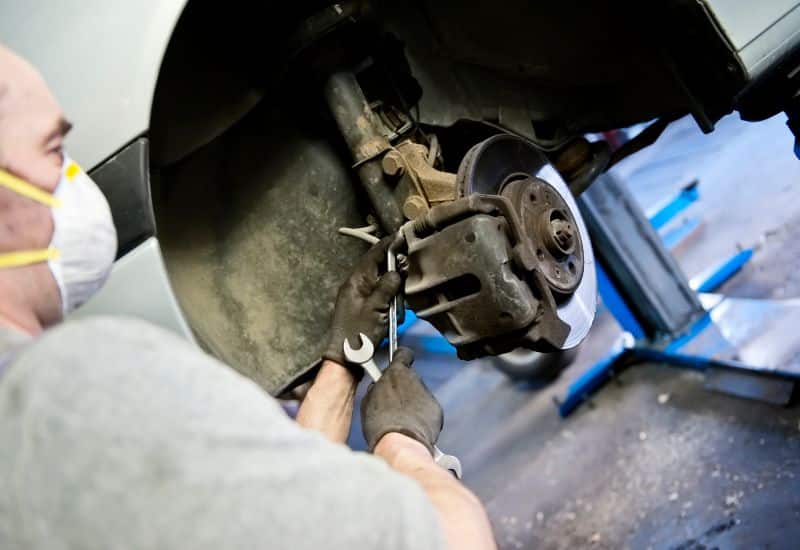
If you’ve recently had any repairs done, some of the connections may have been tightened correctly, and they’ll start letting through brake fluid.
Whenever you replace any component, don’t tighten it too little or too much. If unsure, leave the work up to a trusted professional.
These five causes cover most of the leaks, but if you have checked everything and are still unsure, it’s better to get your car diagnosed at your preferred car service.
Step-By-Step Guide: How To Fix A Brake Fluid Leak Efficiently
Step 1: Diagnosing the Issue
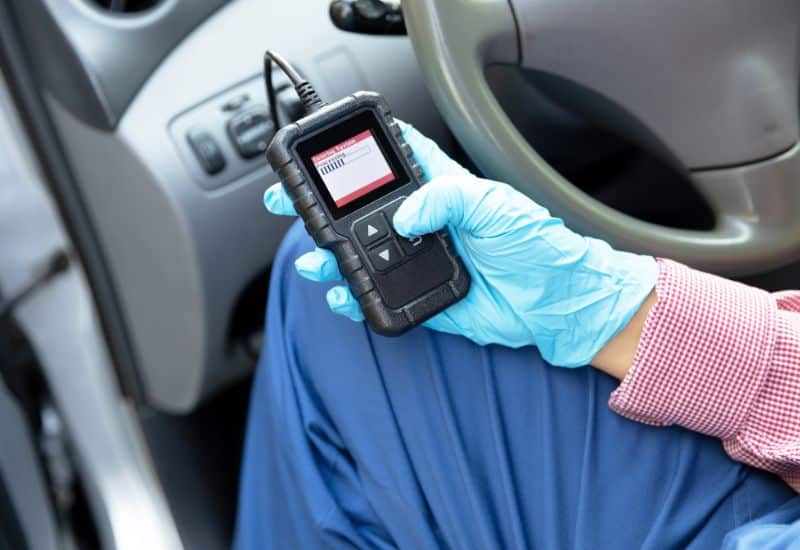
Before replacing anything, make sure you actually have a problem with the brake fluid level. Plug in a diagnostic interface and read the errors present in the car.
Some error descriptions that may be present in case of a brake fluid leak are low brake fluid or open circuit in the brake fluid level switch.
Step 2: Checking the Brake Fluid Level
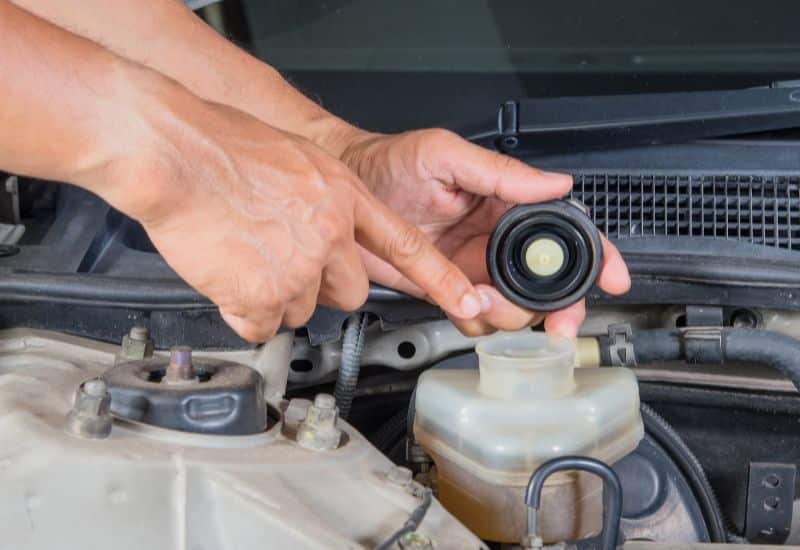
If the issue is consistent in the diagnostic software and you’ve experienced at least some of the mentioned symptoms, proceed to this step.
After lifting the hood, locate the brake fluid reservoir. On its side, you’ll find the minimum and maximum fluid markings. If the level is close to or below the minimum, that’s a good reason to suspect a leak.
Step 3: Locate the Faulty Part
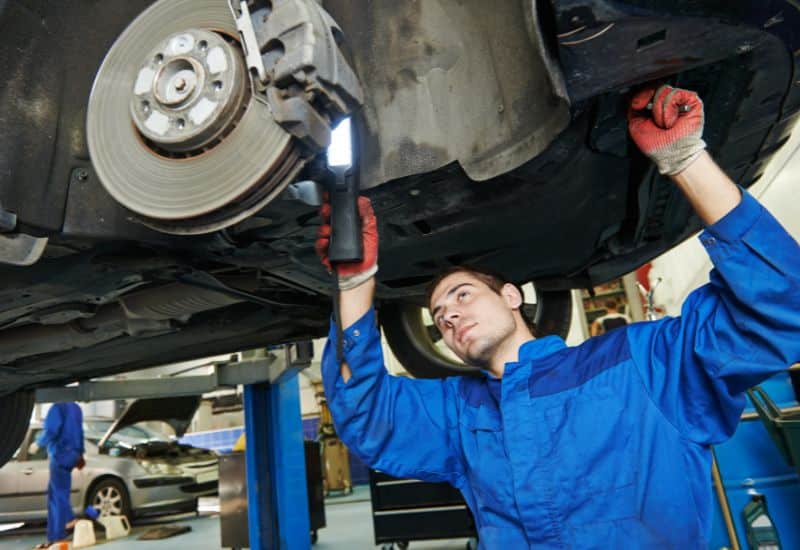
If you have a car lift, it will significantly help. After crawling under the car or lifting it, you should inspect where the fluid is coming from. Depending on the size of the leak, you may see it dripping or in the form of stains near the leaking component.
Step 4: Replace the Component at the Fault

After spotting the leakage and figuring out which part it’s coming from, you’ll have to remove everything getting in the way, for example, the wheel if the part in question is a slave cylinder.
After replacing the faulty component, be sure you installed it and everything else you removed from the car correctly.
Step 5: Bleed Air From the Braking System
After every procedure with the brake hydraulics, you will have to bleed air, which usually enters when you make repairs, from your brakes. This procedure also removes old, contaminated brake fluid. Check the owner’s manual or go to a trusted car service for a procedure compatible with your car.
There are several ways to do this, and here’s one simple step-by-step summary of the procedure:
FAQs
Can I Drive With Leaking Brake Fluid?
For a while, driving with leaking brake fluid is possible. However, this greatly depends on the scale of the leak and the severity of the symptoms.
If you have lost braking power significantly, it can be dangerous to continue driving. Find the nearest car service and have your vehicle inspected.
Is a Brake Fluid Leak Easy to Fix?
While the procedure itself doesn’t require much thought, it requires a few tools and a lot of patience. It may take a while to reach the faulty component and to replace it. The fix will also quickly become greasy. It’s best to let a mechanic do it if you’re squeamish.
Can Worn Brake Pads Cause Brake Fluid Leak?
Yes, worn brake pads are among the potential causes of brake fluid leaks. Usually, this happens if you’ve let your brake pads get way too thin. Because the caliper cylinder has to extend further than usual, this may lead to more wasted brake fluid.
It’s best to replace your brake pads when it’s time to because driving with worn brake pads can lead to many other problems.
Conclusion
A brake fluid leak can happen in many places, but it’s most common on brake calipers and rubber hoses. Old and cracked rubber parts are often the culprit.
The symptoms include a soft brake pedal, poor braking performance, fluid stains on the tires or puddles under the car, and a low fluid level in the reservoir.
After confirming your car leaks, you should inspect it to find the exact part letting fluid through. Don’t forget to bleed the air after replacing any hydraulic brake component!

Written By
Jason Farrell
Jason Farrell is a certified master technician, the editor of Mechanic’s Diary in Pittsburgh, Pennsylvania. He is ASE (Automotive Service Excellence) certified and earned a Bachelor’s Degree in Automotive Technology from Pittsburg State University. With nearly 18 prior years of experience in the automotive field, he has extensive knowledge about Domestic, European, and other foreign makes and models of cars and light trucks. Jason’s experience working as a technician and service manager at dealerships, gave him the experience and know-how of most aspects of inspection, diagnosis, and repair from engine and drivability to electrical, HVAC, brakes, steering and suspension and everything in between.

